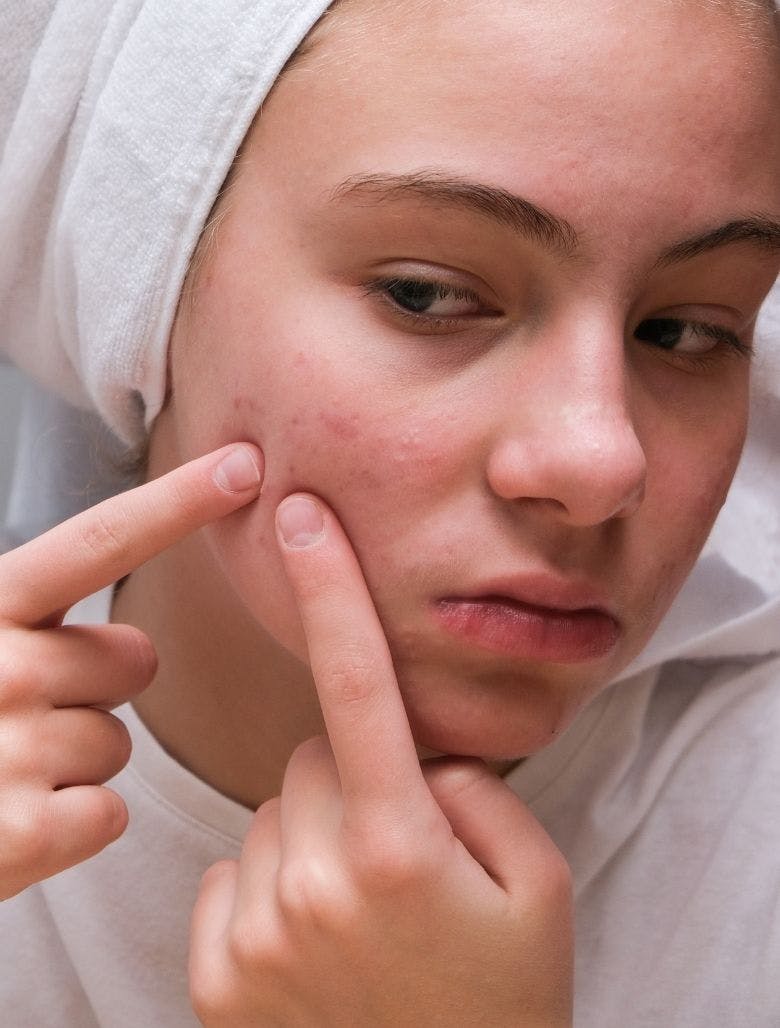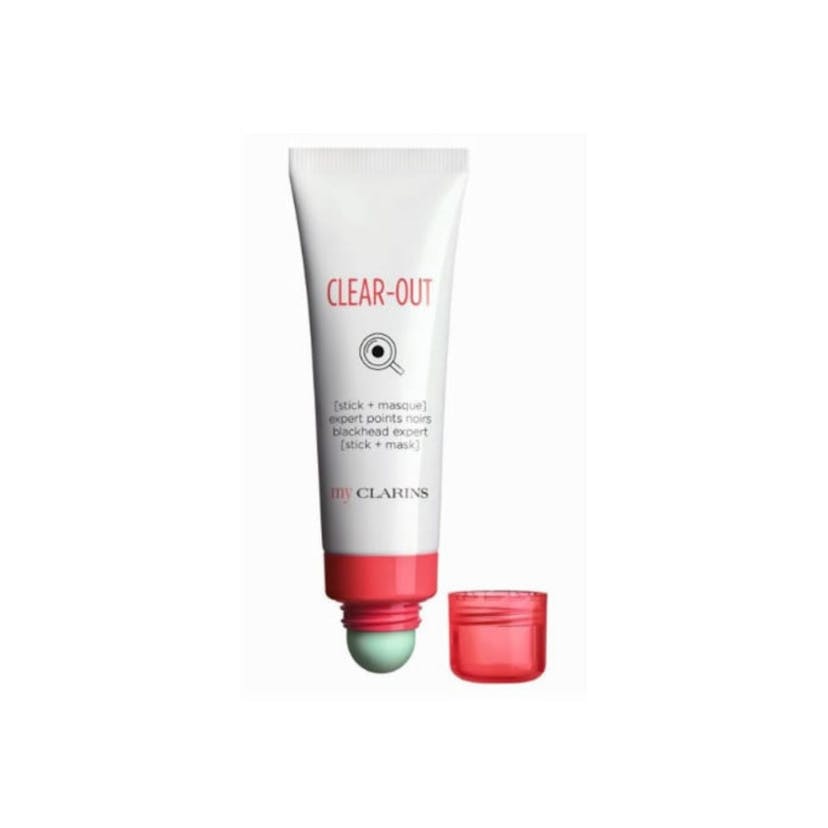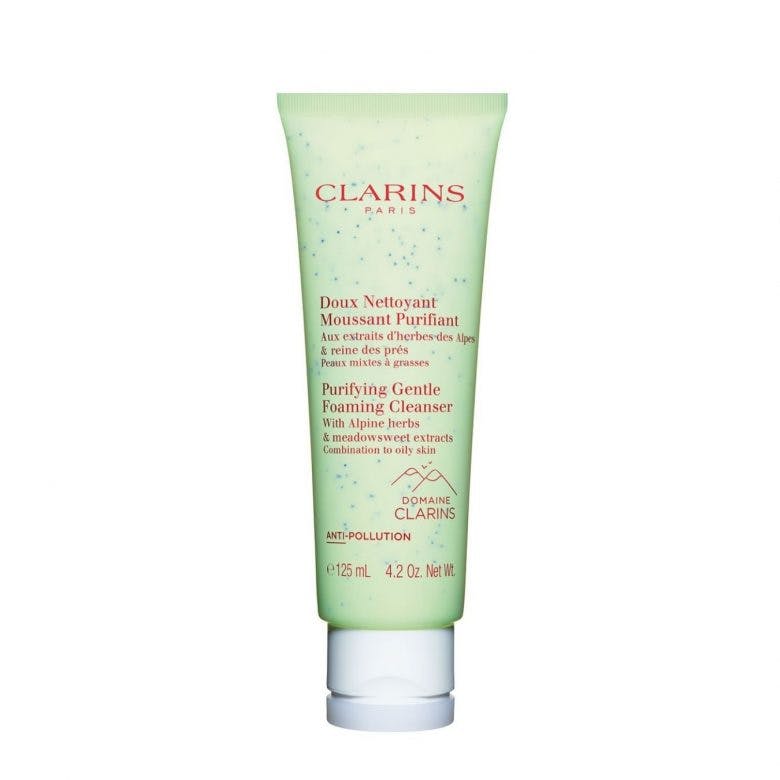4 Types Of Acne And How To Treat Them, According To Experts
5 minutes read
What type of acne do I have? Distinguishing a papule from a pustule is not the most exciting topic, but certainly, a key one to achieving a spotless face. Acne can take several forms, and treatments require specific approaches.
We look at the different types of acne. To break down the specific treatments for each type of acne, we consulted with one of America’s top physicians and CEO at Atlanta Dermatology, Darren Casey, and leading NHS Consultant Dermatologists: Dr Gabriela Petrof and Dr Anastasia Therianou.

4 types of acne and how to treat them
1. Blackheads and Whiteheads
“Blackheads and whiteheads fall under the category of comedonal acne,” says Darren Casey, M.D. US-based Dermatologist and CEO at Atlanta Dermatology.
Whiteheads (closed comedones) are closed pores clogged with dead skin cells, dirt and excess sebum. They appear as tiny bumps, white or flesh coloured, on the skin’s surface.
Blackheads (open comedones) are the same, except they are open. The black dots aren’t filled with dirt, so experts suggest resisting scrubbing because it will only worsen the acne.
Both are called “non-inflammatory” acne simply because they are not inflamed and don’t cause swelling.
Treatment Plan:
Blackheads and whiteheads are the mildest forms of acne.
Casey says: “Comedonal acne clears up with topical treatments like benzoyl peroxides, alpha and beta hydroxy acids, and over-the-counter retinoids like adapalene.” Adding: “The cause is sebum and wax build-up because of sex hormone, genetics or bad skincare.”
If pores are not properly cleaned, they can turn into pimples. Skincare experts suggest exfoliating once or twice a week. More than that will irritate your skin.
The Fresh Scrub works best for all skin types. However, for people with oily skin, you might benefit from the salicylic acid beads from the Pure Scrub.
This exfoliator gently removes dead skin cells while deep-cleansing pores. It’s a good way to prevent pesky whiteheads and blackheads from developing.

Try CLEAR OUT Blackhead Expert [stick + mask] for banishing the pesky blackheads. This 2-in-1 [stick + mask] is a blackhead eraser and leaves the skin soft, smooth and clear, even close up.
Another option is comedo (medical term for blackheads and whiteheads) extraction.
2. Papules
If blackheads and whiteheads are infected by bacteria, they may become irritated and turn into another type of acne called acne papules – or inflamed comedones, a.k.a. pimples or zits.
These are tiny, hard red bumps, all caused by excess sebum, bacteria and dead skin cells.
Treatment Plan:
Casey recommends washing the face gently with warm water and a gentle cleanser twice daily and after exercise. Also, make sure you are make-up free when exercising or sleeping.
Experts say exercise can lead to open pores, which can become blocked by particles of make-up. Furthermore, sleeping with make-up on can clog the pores resulting in the development of acne.
Keep an acne control spot treatment like CLEAR-OUT Targets Imperfections for days that need zapping spots quickly. It is infused with salicylic acid to take down the swelling. Apply directly to imperfections morning and evening following day or night time moisturiser.
3. Pustules
Next are the pus-filled pimples called pustules. These are the super tempting zits to squeeze – but please don’t, as this would leave permanent acne scars. This acne is similar to papules, except that pustules have a yellow- or white coloured centre.
Treatment Plan:
The American Academy of Dermatology Association recommends washing your face with cleansers that contain benzoyl peroxide or salicylic acid.

Try using a salicylic cleanser like the Purifying Gentle Foaming Cleanser. This creamy, rinse-off cleanser for oily skin is formulated with mattifying Organic Meadowsweet extract and pore-cleansing blue granules made with salicylic acid. Follow with Purifying Toning Lotion, which can be used day and night for best results.
“Treatment depends on the acne severity,” says Dr Gabriela Petrof, MBBS, PhD, NHS Consultant Dermatologist.
She suggests taking “oral antibiotics with topical azelaic acid” for people with moderate acne. For severe acne with scarring, “oral isotretinoin” can be considered along with derm-based laser treatment.
If you don’t see results from treatment in six to eight weeks, see a dermatologist.
Read next: The Complete Guide On How To Use Salicylic Acid
4. Cysts And Nodules
Nodular acne and cystic acne are two of the most severe forms of acne. They are both formed deep under the surface of the skin. These are large and swollen and can hurt just to the touch – they are also unsqueezable, so leave well alone.
Unlike regular pimples, these acne types tend not to form a head. Therefore, attempting to squeeze them will not release pus and may lead to further inflammation and hyperpigmentation.
Healthline describes that cystic acne can look like large, red boils, but because they’re filled with pus, cysts are softer than nodular acne.
Acne cysts develop when blackheads or whiteheads spread into surrounding areas of the skin. The body responds to this, and the local immune system produces pus. By contrast, acne nodules remain intact, deep under the skin.
Treatment Plan:
“Pustules cysts and nodules can cause scarring and hyperpigmentation and require the attention of a dermatologist,” says Casey.
Why do some people get some types of acne and not others?
Dr Anastasia Therianou MD, PhD, London-based NHS consultant dermatologist, says: “Some people get acne while others don’t because of their genetic predisposition. Therefore, some people are more susceptible to acne due to genes.”
A study found that if both parents have acne, you’re more likely to get more severe acne early. If one or both of your parents have adult acne, you have a higher risk of getting it too.
So yes, despite following a strict skincare regimen or nutrient-dense diet, having a spot or two is inevitable.
Just as not all spots are the same, so are the reasons that cause them. To pinpoint the cause can be tricky but understanding, observing, and listening to your skin and body are key. Here we list 10 Common Causes Of Acne and Deciphering your spots based on locations via the face mapping technique.
Sign up for our newsletter
We will keep you in the loop for special offers, exclusive gifts and product news.

